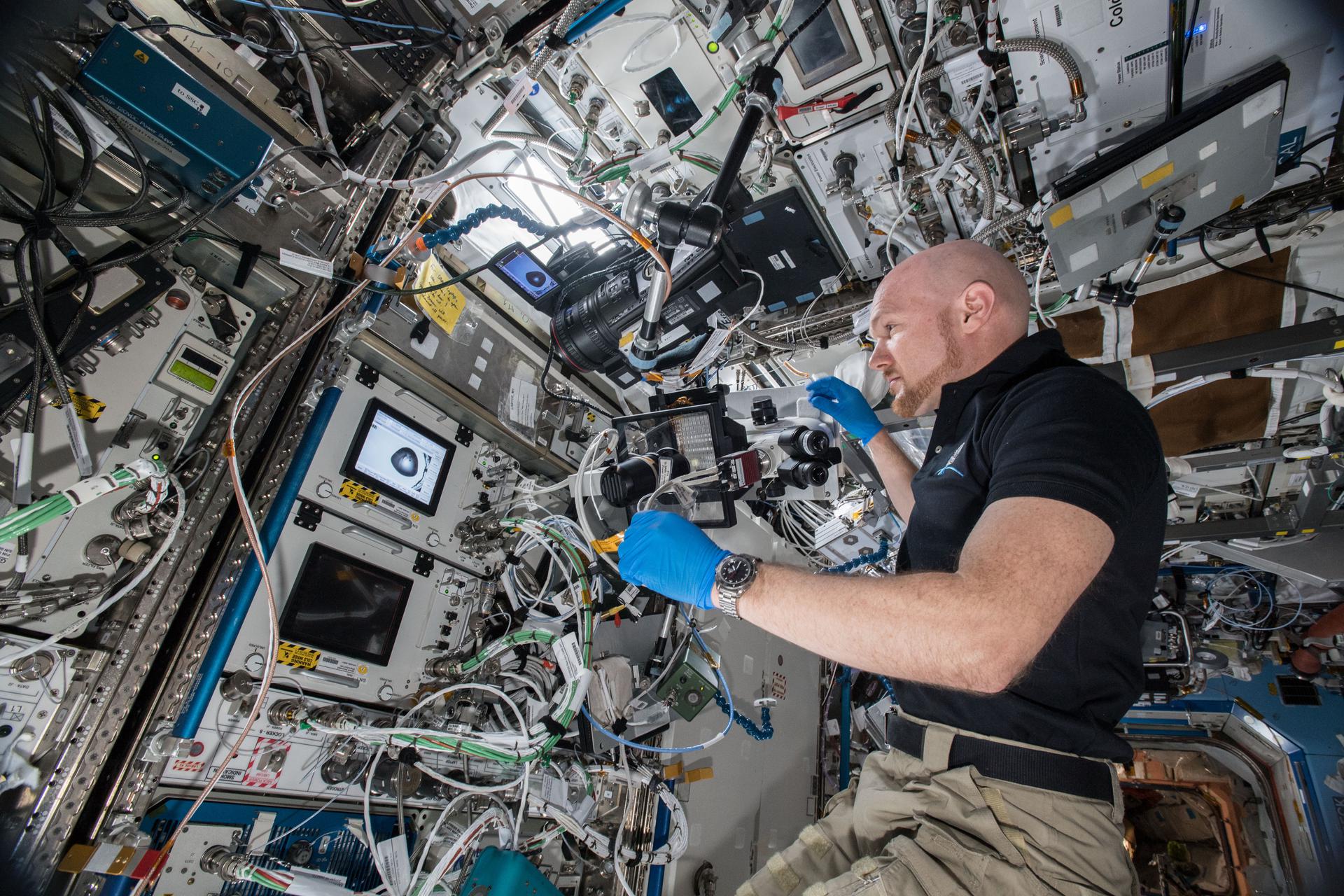
NASA will host a media teleconference at 1 p.m. EST Tuesday, Dec. 14, to discuss science investigations launching on the next SpaceX commercial resupply flight to the International Space Station.
Experiments aboard the launch include investigations into bioprinting, crystallization of monoclonal antibodies processing alloys, and laundering clothes in space. Others will study changes in immune function and plant gene expression in microgravity. The resupply mission will also bring student citizen science projects to the station.
Audio of the teleconference will stream live online at:
SpaceX is targeting 5:06 a.m. EST on Tuesday, Dec. 21, for the launch of its Dragon spacecraft on a Falcon 9 rocket from Launch Complex 39A at NASA’s Kennedy Space Center in Florida. The flight will be SpaceX’s 24th Commercial Resupply Services mission to the orbiting laboratory.
To participate in the teleconference, media must contact Monica Witt at: monica.j.witt@nasa.gov at least two hours prior to the event for dial-in information.
Participants in the briefing will be:
- Dr. Robert Dempsey, acting deputy chief scientist for the International Space Station Program. Dempsey will provide an overview of space station research and how it can benefit humanity.
- Dr. Michael Becker, project manager at the German Aerospace Agency and principal investigator for the Bioprint FirstAid investigation. This technology demonstration tests a portable, handheld bioprinter that uses a patient’s own skin cells to create a tissue-forming patch that can cover a wound and accelerate the healing process.
- Alicia Carey, lead program manager for the Turbine Superalloy Casting Module (Turbine SCM). Turbine SCM tests a commercial manufacturing device that processes heat resistant alloy parts in microgravity.
- Dr. Imara Perera, research professor at North Carolina State University, and principal investigator, and Dave Reed, operations director for the MVP Plant-01 investigation. This study profiles and monitors the development of the shoots and roots of plants in microgravity to help scientists understand the mechanisms by which plants sense and adapt to changes in their environment.
- Niko Hansen, representative of the Bacteria Resistant Polymers in Microgravity investigation, one of two Student Payload Opportunity with Citizen Science (SPOCS) launching on this mission.
- Theo Nelson, representative for the Characterizing Antibiotic Resistance in Microgravity Environments (CARMEn) investigation, the second SPOCS investigation.
- Dr. Brian Crucian, principal investigator for Host Pathogen, which assesses space-induced changes in immune status by culturing cells collected from crew members before, during, and after spaceflight with both bacteria grown under simulated spaceflight conditions and unaltered bacteria.
- Paul Reichert principal investigator for CASIS PCG 20, which continues work on crystallizing a monoclonal antibody developed by Merck Research Labs that is the active ingredient in a drug that targets multiple cancers.
- Dr. Mark Sivik, a Senior Director and Research Fellow at Procter & Gamble (P&G) and co-investigator of the P&G Telescience Investigation of Detergent Experiments PGTIDE investigation. PGTIDE will study the performance of its stain removal ingredients and the formulation’s stability in microgravity.
SpaceX’s Dragon spacecraft also will carry crew supplies and hardware to the orbiting laboratory to support the Expedition 66 crew.
In November, the International Space Station surpassed its 21-year milestone of continuous human presence, providing opportunities for unique research and technological demonstrations that help prepare for long-duration missions to the Moon and Mars and also improve life on Earth. During that time, 249 people from 19 countries have visited the orbiting laboratory, which has hosted nearly 3,000 research investigations from researchers in 108 countries and areas.
For launch countdown coverage, NASA’s launch blog, and more information about the mission, visit:
-end-
Monica Witt
Headquarters, Washington
202-358-1100
monica.j.witt@nasa.gov

























